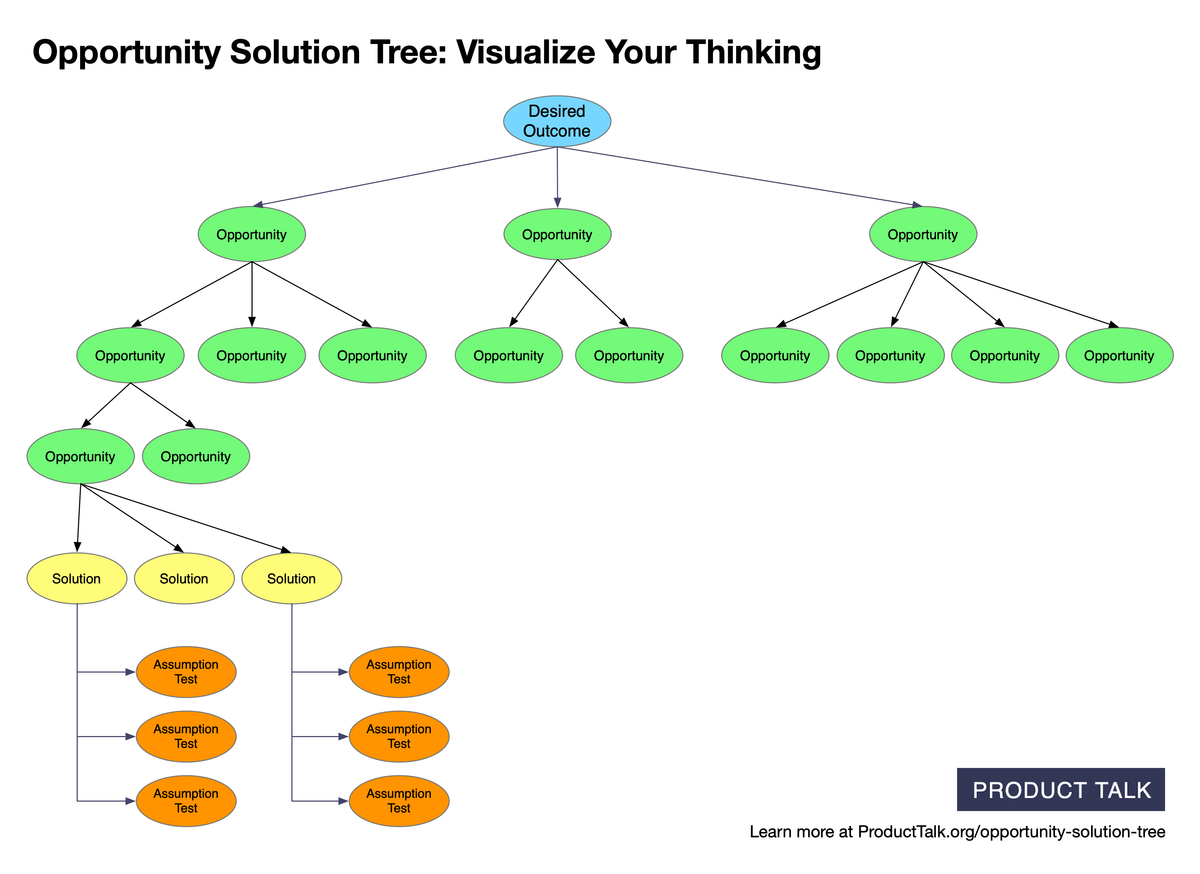Opportunity Solution Tree

What is an opportunity solution tree?
Teresa Torres developed the opportunity solution tree as a simple way of visually representing the paths you might take to reach a desired outcome.
This visual framework helps product teams develop and share a mental representation of their combined knowledge, enabling them to make fast decisions together.
What are the four components of an Opportunity Solution Tree?
The tree has four distinct levels:
- Desired Outcome (the root) — The business need that reflects how your team can create value
- Opportunity Space — Customer needs, pain points, and desires that, if addressed, will drive your outcome
- Solution Space — The solutions you're exploring to address opportunities
- Assumption Tests — How you'll evaluate which solutions will best create customer value while driving business value
Why is the Opportunity Solution Tree powerful?
The opportunity solution tree makes implicit assumptions explicit. It helps teams draw strong logical connections between the solutions they're exploring, the opportunities they've identified, and the impact both have on their desired outcome.
By visualizing all four components together, teams can see how their daily work connects to broader business goals.
How do teams use an Opportunity Solution Tree?
As teams make decisions, they chart out a path through a branch of their tree. When new information comes in—like a failed experiment—teams can use their tree to quickly revisit those decisions and determine if they need to evolve their solution, choose a new opportunity, or pursue a different outcome.
This keeps teams aligned as they manage the messy cycles of continuous discovery.
Learn more:
- Opportunity Solution Trees: Visualize Your Discovery to Stay Aligned and Drive Outcomes
Related terms:
- Desired Outcome
- Opportunity Space
- Assumption Testing
- Target Opportunity
Last Updated: October 25, 2025
